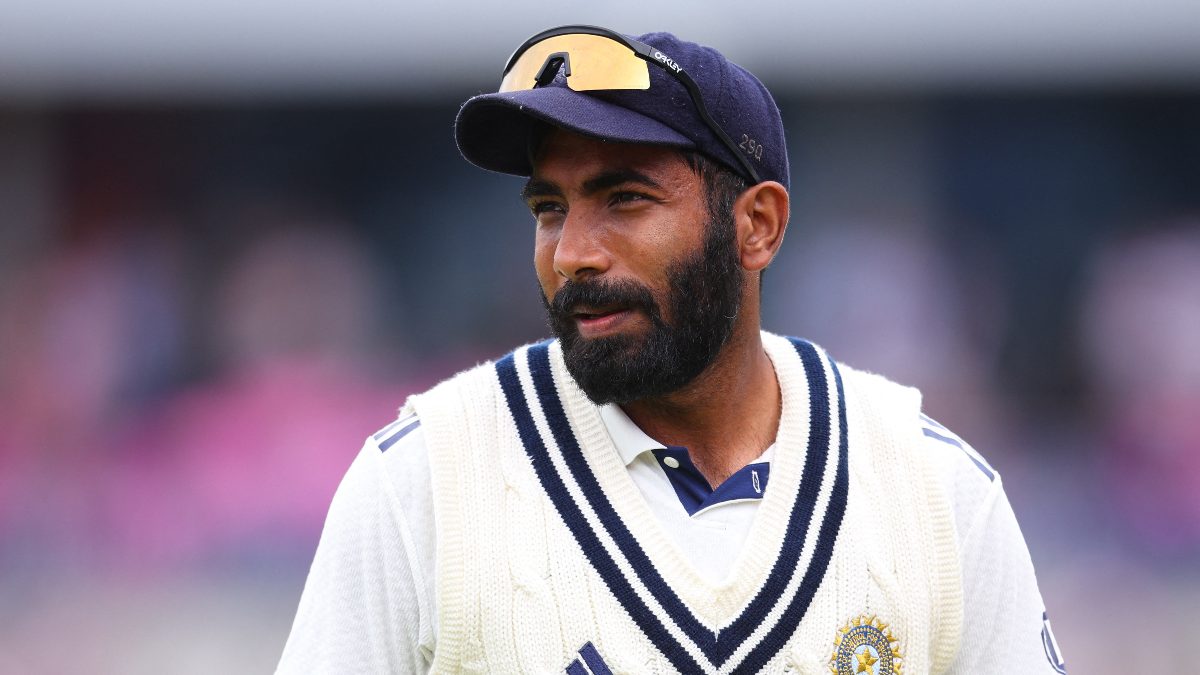After the 27th over in the first innings, India are well poised at 1-134. The plan is going to script. For close to decade India’s 50-over formula has been constructed around such solid platforms and vicious flourishes, and in Mumbai the template was in order to come into effect. Australia had bowled exceptionally well, but as has often been the case one of the Indian top three had managed to escape from their trap. Shikhar Dhawan and KL Rahul are well-set and about to switch gears. Australia knew if they didn’t take wickets in clumps a total over 300 was inevitable. Most teams and captains would have already started thinking about run prevention. But Aaron Finch is different. He always thinks of wickets and preservation is not his style. So the minute Rahul spooned a catch to short cover, he seized the opportunity to choke the Indian middle order. [caption id=“attachment_7908121” align=“alignleft” width=“380”] Pat Cummins celebrates the wicket of India’s Rishabh Pant with his teammates. Sportzpics[/caption] The minute Kohli walked in Aaron Finch turned immediately to his strike bowler Pat Cummins. Even if Kohli was batting out of position, he was still the key. Cummins’ plan to the Indian skipper was simple. Bowl full, wide of the off-stump and make Kohli come at him. Kohli missed the first, but thick edged the next ball to third-man. Cummins might not have got his man, but a ball later he picked up the well-set Dhawan. Australia had accomplished its first task. They had dismissed the Indian top three inside the first 30 overs. But with Kohli still at the crease, Finch knew he couldn’t let India consolidate. Finch then brought in the leg spin of Adam Zampa, in a way Kohli’s nemesis. An over later the leg-spinner had snared the Indian captain for the fourth time in six innings. From the other end, Cummins had finished his two-over burst, his final ball - a short quick bouncer to new batsman Shreyas Iyer, a deliberate ploy to unsettle the Indian No. 5. Mitchell Starc took over the mantle from Cummins. His first ball, another well-directed bouncer that tickled Iyer’s gloves and into his armpit. He followed it up with a full ball slanted across him. Iyer pushed hard, his weight on the back foot, his hands in front of eyes, the ball kissed the edge to wicket-keeper Alex Carey. It was the old two-card trick, executed in the space of seven balls by two world-class fast bowlers. India lost four wickets in 20 balls. Finch had rotated his bowlers three times in those six overs. This was purely based on match-ups and well-prescribed game-plans. The phase had opened the game for Australia. After the match, Kohli stated: “In phases, we were far too respectful to the bowlers and we didn’t show enough intent or risks to get those extra runs to put bowlers under pressure.” Importantly, Finch never allowed the Indian batsmen to dominate the game by changing his bowlers in a coordinated fashion. Even with Rishabh Pant and Ravindra Jadeja building a healthy partnership for the sixth wicket, Finch backed left-arm spinner Ashton Agar against the two southpaws. In modern-day cricket, a left-arm spinner to a left-handed batsman, especially in the later stages of the innings, is considered a mismatch, but Australia had thought long and hard about it. Agar bowled around the wicket, he bowled into the pitch, his deliveries angled across the batsmen and his line was predominately leg-stump, thereby providing no means for Jadeja and Pant to free their arms. Agar was perhaps the weak link in the Australia’s bowling, the bowler that Kohli referred to as ‘giving too much respect’, but it was a master class on how to contain the batsmen. Even the fields were extraordinary. The deep point was squarer, the third man finer while the mid-wicket was left unmanned. Agar might not have got his rewards, but a maiden he bowled in the 38th over built the pressure. It eventually led to Kane Richardson picking the wicket of Jadeja. The wicket of Jadeja exposed the tail and now Finch could just afford to toss the ball to Starc and let him crush the toes with his trademark yorkers. Notably, Finch terminated India’s grand plan of acceleration by clever bowling changes and smart field placements. India, on the other hand, looked lethargic with the bat and ball. The intent that Kohli craves for was missing. Perhaps it was largely due to the fact that until the 27th over mark it was all going per script, but it was the prowess of the Australian bowlers during the middle overs that had upset their rhythm. Over the past few months, India has made a mockery of Sri Lanka, West Indies, and South Africa. Perhaps at 1-134 in 27th over, they felt a little too comfortable for their own good which led to complacency. However, the Australian bowling attack was ruthless and a class above the pace battery that Indian batsmen have been confronting over the past few months. They will continue to bowl faster and hit the splice of the blade even on the most docile tracks in India. This is a well-thought-out Australian attack that is led by a thoughtful and instinctive captain.
Australia’s Finch never allowed the Indian batsmen to dominate the game by changing his bowlers in a coordinated fashion
Advertisement
End of Article


)

)
)
)
)
)
)
)
)



